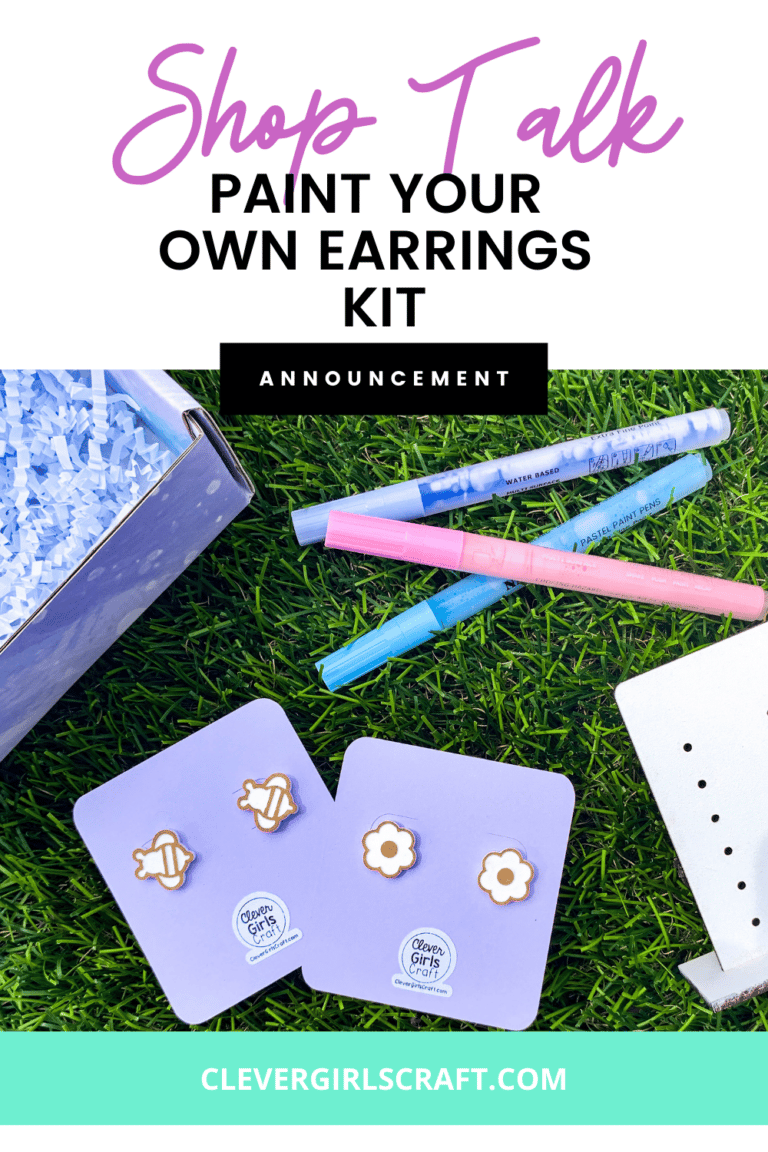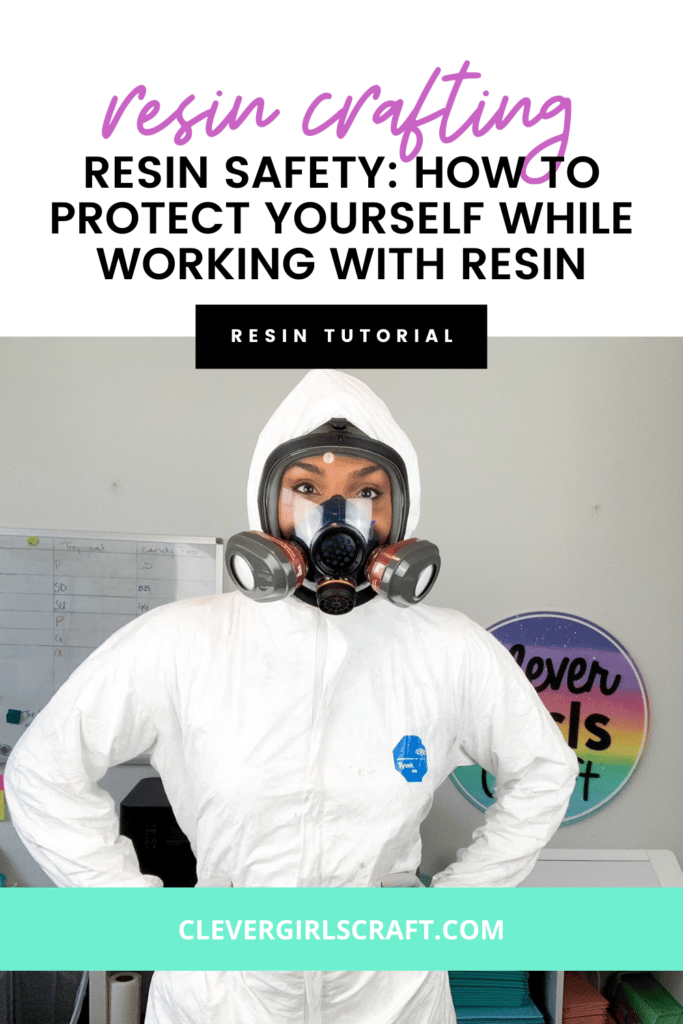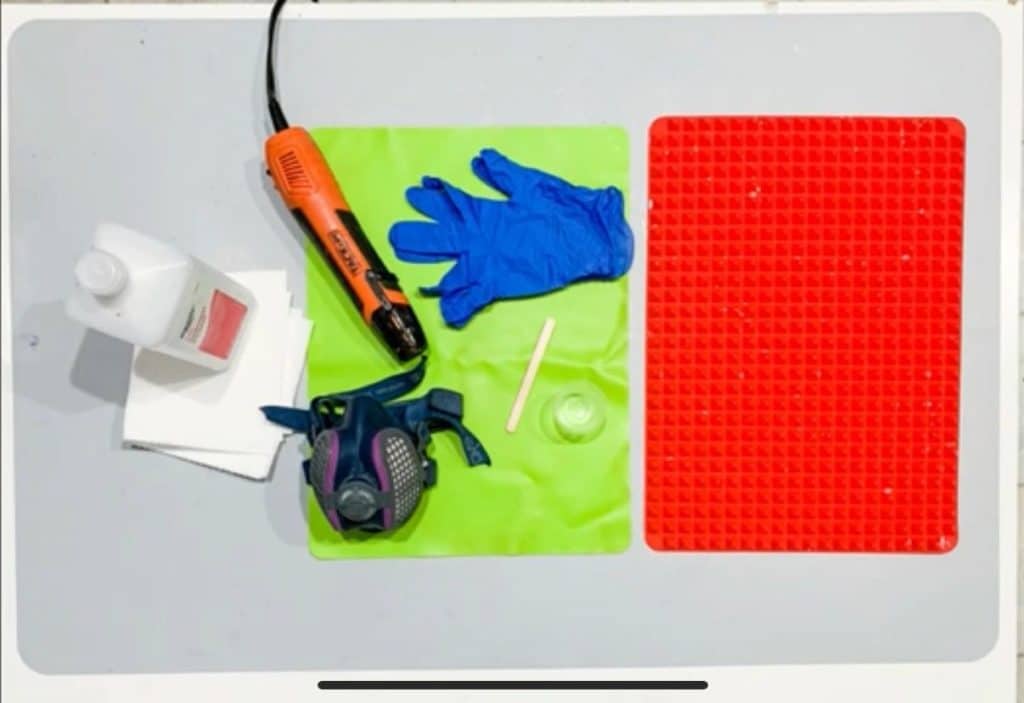
Paint Your Own Earrings Craft Kits
With Spring springing and Easter just around the corner, I’m feeling extra crafty! This past week I created a brand new craft kit for kids


I am Lydia Diaz; wife, mom & resin fanatic. I have been crafting all of my life and specifically working with resin for since 2018. Through my journey, I have fallen in love with resins’ amazing features and capabilities. For me there was a lot of “trial and error” with working with resin. I want to share my knowledge, tips and practical techniques in order for you to “cut through” the stage of trial and error with using epoxy. Disclaimer: I am not responsible for any personal or property damage. My blog and videos are for suggestions only, the true authority is the manufacturer of your resin. ALSWAYS read the label on your resin and follow their instructions. I believe in sharing in practical techniques and advice that have helped me along the way.
Here are some common terms that are used in my videos, blog posts, and the crafting community.CURED/CURING: is the time it takes for the resin to transition from a liquid to solidEPOXY: Epoxy resin “is a specific type of resin meant for creating shallow items or coating items. It is a two-part liquid that when mixed together reacts, and cures to form a hard object. The two parts must be mixed in the precise ratio given in the manufacturer’s instructions. Imprecise measuring and mixing prevents the epoxy resin from solidifying or curing.
The possibilities are endless when it comes to resin. You can use resin within/outside of a mold as well as in small and or large projects. Aside from its WORD resin is my favorite medium due to its fluidity and permanency. Though there are other types of resin, I specifically work with epoxy resin for the following reasons that are right for me:
UV resin is expensive, has an unpleasant scent (my personal experience) and you cannot use it in a room that has natural sunlight since the UV rays will cure UV resin.
The following items should be worn &/used at all times when working with resin.
WorkSpace Items: Alcohol, paper towels, heat gun, mask, gloves, mixing cups, popsicle sticks, silicone mats and a doing mat. Rubbing alcohol & paper towels: can be used to quickly wipe up spillsGloves: Gloves are key. I prefer Nitrile gloves however reusable options work as well. I wear nitrile gloves every time I am working with resin and handling bottles and or molds.Mixing cups: You can use a variety of sizes depending upon your project. Popsicle sticks: Are used to mix the resin. I buy these in bulk. You can opt to use reusable silicone stirring sticks instead.Respirator/Mask: EVEN if you are in a well-ventilated room a mask should be worn. Check the label on your resin to see if you need a respirator or what type of mask to wear. I prefer a mask that’s approved by the National Institute for Occupational Safety and Health (NIOSH) for fumes. Doming mat: Used for when you are pouring resin over a finished piece. This is essential; especially if you plan to dome your pieces.Silicone mats (green + gray in the picture above): I prefer to have both mats accessible to cover my table topHeat gun: This is used to pop surface air bubbles BEFORE it’s cured and AFTER pouring resin. Other methods are used however I prefer a heat gun which is safer and easier for me. I’ve also found that other methods such as a flame can melt certain types of molds.
Wise to wear a mask to not breathe in the fumes Resin will not stick to silicone and will easily peel out once curedRemember that resin is a chemical and you want to avoid it getting on your skin.
Make sure to read the safety labels on your resin and follow all guidelines and instructions. Each resin is a little different, so always make sure you’re following their directions. Please protect your body and property whenever working with resin.
Always handle resins with care, and follow the proper use that is recommended by the manufacturer. Remember, I am here to help YOU. Along the way, you’ll learn proper techniques for curing, troubleshooting, and then getting to the next level of resin crafting including words, vinyl etc. My next post will aid you in “How to Mix the ‘ Right Way’”
Watch: “Resin Crafting Basics & Beyond Course“
DISCLAIMER: This description contains affiliate links, which means that if you click on one of the product links, I’ll receive a small commission. This helps support the channel and allows me to continue to make videos like this. Thank you for the support, I truly appreciate it!
MATERIALS
Resin: http://artnglow.refr.cc/lydiad
Small Silicone Mats: https://amzn.to/2YfWXsp
Giant Silicone Mat: https://amzn.to/3gb2zKw
Mixing Cups: https://amzn.to/3229VuY
Reusable Gloves: https://amzn.to/324HU5V
Heat Tool: https://amzn.to/34bm2IK
Doming Mat: https://amzn.to/2EjN7yQ
Mask: I bought this one in July 2019 & it’s no longer available.
RECORDING GEAR
Ring Light: https://amzn.to/2JsERd5
Soft Boxes: https://amzn.to/2I0xmdV
Camera: https://amzn.to/34dIgda
Tripod: https://amzn.to/2YaTQlp
Watch: “Resin Tutorial Safety Essentials and Workspace Basics“
DISCLAIMER: This description contains affiliate links, which means that if you click on one of the product links, I’ll receive a small commission. This helps support the channel and allows me to continue to make videos like this. Thank you for the support, I truly appreciate it!
MATERIALS
Resin: http://artnglow.refr.cc/lydiad
Silicone Mat: https://amzn.to/3gb2zKw
Mixing Cups: https://amzn.to/2Q2FL5e
RECORDING GEAR:
Ring Light: https://amzn.to/2JsERd5
Soft Boxes: https://amzn.to/2I0xmdV
Camera: https://amzn.to/34dIgda
Tripod: https://amzn.to/2YaTQlp

With Spring springing and Easter just around the corner, I’m feeling extra crafty! This past week I created a brand new craft kit for kids

In September 2020 I was getting ready to go outside with my daughters. As the girls got ready I put on my sunblock and grabbed

| Cookie | Duration | Description |
|---|---|---|
| cookielawinfo-checkbox-analytics | 11 months | This cookie is set by GDPR Cookie Consent plugin. The cookie is used to store the user consent for the cookies in the category "Analytics". |
| cookielawinfo-checkbox-functional | 11 months | The cookie is set by GDPR cookie consent to record the user consent for the cookies in the category "Functional". |
| cookielawinfo-checkbox-necessary | 11 months | This cookie is set by GDPR Cookie Consent plugin. The cookies is used to store the user consent for the cookies in the category "Necessary". |
| cookielawinfo-checkbox-others | 11 months | This cookie is set by GDPR Cookie Consent plugin. The cookie is used to store the user consent for the cookies in the category "Other. |
| cookielawinfo-checkbox-performance | 11 months | This cookie is set by GDPR Cookie Consent plugin. The cookie is used to store the user consent for the cookies in the category "Performance". |
| viewed_cookie_policy | 11 months | The cookie is set by the GDPR Cookie Consent plugin and is used to store whether or not user has consented to the use of cookies. It does not store any personal data. |